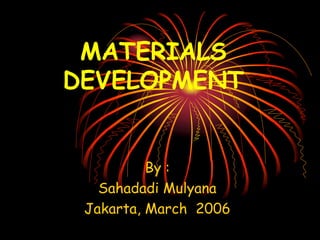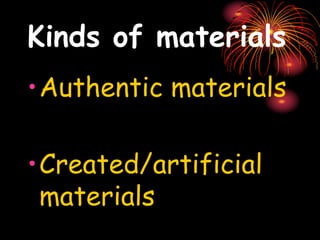The document discusses theories of learning and teaching materials. It defines teaching materials as any resources used to assist teachers in conducting learning activities in the classroom, including both written and non-written materials. The document outlines different types of teaching materials such as printed materials, audiovisual materials, and multimedia materials. It also discusses the roles and design of materials, including using them to present language models, as a source for learner practice and interaction, and as a reference source. The document compares authentic materials created for non-pedagogical purposes and created materials specifically designed for teaching. It notes stages in the materials development process including evaluation, adaptation, writing, and managing writing projects.












































